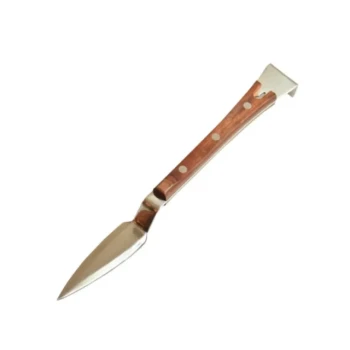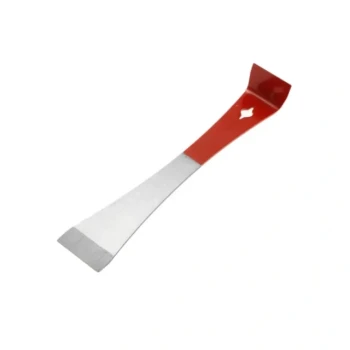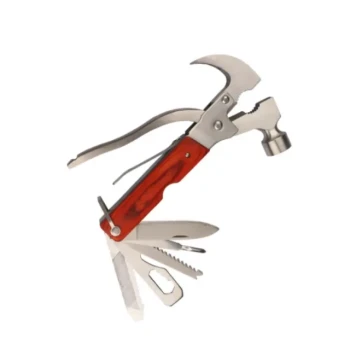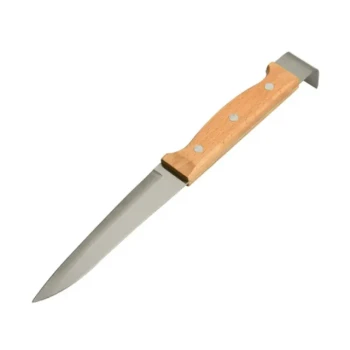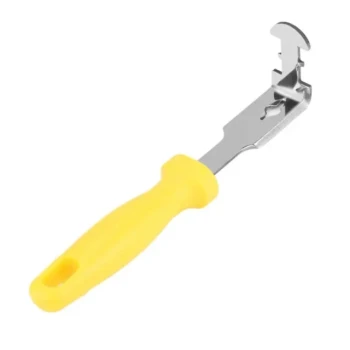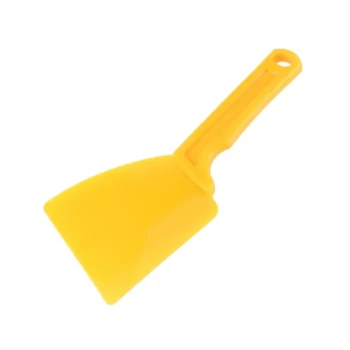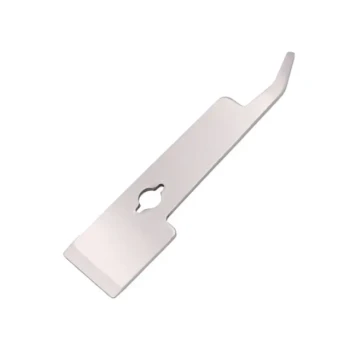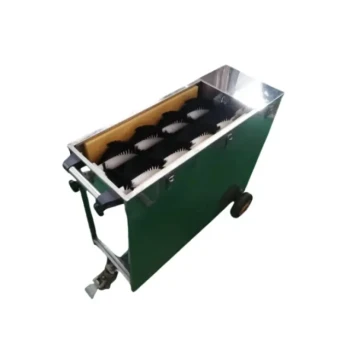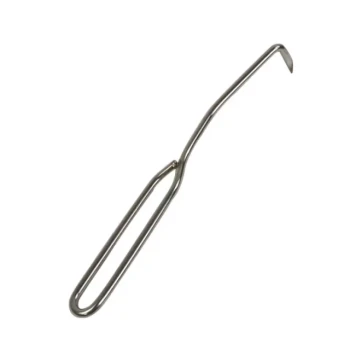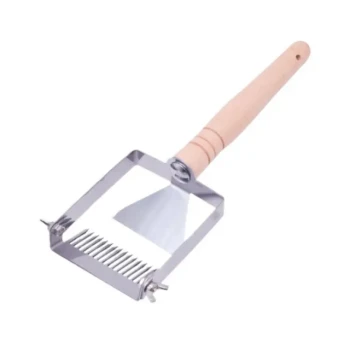To ensure safety and longevity, a hive tool requires disciplined care: always handle its sharp, beveled edges with caution, scrape it clean of wax and propolis after each use, and develop a system to avoid misplacing it during hive inspections. Regular cleaning with soap, water, and rubbing alcohol for stubborn propolis not only prolongs the tool's life but is a critical step in preventing the spread of disease between hives.
The hive tool is a simple lever, but its effectiveness and your safety depend entirely on mindful handling. Consistent cleaning and a constant awareness of its sharp edges are the non-negotiable habits of a proficient beekeeper.

The Foundation of Care: Routine Cleaning
A clean hive tool is more than just a matter of appearance; it's a fundamental aspect of hive hygiene and tool efficiency. Buildup of propolis and wax can make the tool difficult to use and may transfer pathogens between your colonies.
Scrape After Every Use
After each hive inspection, take a moment to scrape off any large deposits of wax and propolis. Doing this while the materials are still fresh prevents them from hardening into a stubborn layer that is much harder to remove later.
Wash Away Sticky Residues
Honey and other residues can be easily removed with warm water and soap. This simple step ensures the tool is clean to the touch and ready for its next use without being a sticky mess.
Dissolve Stubborn Propolis
For the notoriously sticky "bee glue" or propolis stains, rubbing alcohol is the most effective solvent. Apply a small amount to a cloth and wipe down the tool to remove any remaining film, leaving the metal clean and smooth.
Prioritizing Safety in Handling
While it may look like a simple pry bar, a hive tool has sharpened edges designed for scraping and cutting. Treating it with the same respect you would any other sharp tool is essential for preventing injury.
Respect the Edges
The flat end of a standard hive tool has a sharp bevel, much like a chisel. It is designed for scraping and can easily cut you if it slips. Always direct your force and movement away from your body and hands.
Use Proper Leverage
A hive tool is designed to pry apart hive bodies and frames that are sealed with propolis. When using it as a lever, ensure you have a firm grip and stable footing. Sudden slips can cause injury to you or damage to your wooden hive components.
Store It Securely
Avoid carrying the hive tool loosely in a pocket where the sharp end could cause injury. Many beekeeping jackets have dedicated pockets, or you can use a tool belt. When not in use, store it in a designated place in your bee kit.
Common Pitfalls to Avoid
Beyond basic cleaning and safe handling, a few common issues can frustrate beekeepers. Addressing them proactively makes your work smoother and more professional.
The Inevitability of the Lost Tool
Losing a hive tool in the grass around your apiary is a remarkably common and frustrating experience. Its dull color often blends in perfectly with the ground, making it easy to set down and forget.
Simple Prevention Strategies
The best way to avoid losing your tool is to make it highly visible. Paint the handle a bright, fluorescent color like orange, pink, or yellow. Some beekeepers even attach a colorful ribbon or lanyard to make it easier to spot.
Making the Right Choice for Your Goal
Your approach to hive tool management directly impacts your efficiency, safety, and the health of your bees.
- If your primary focus is hive health: Make cleaning and sterilizing your tool with rubbing alcohol between hives a non-negotiable part of your routine to prevent disease transmission.
- If your primary focus is personal safety: Always treat the tool as a sharp object, using controlled motions and directing force away from your hands and body.
- If your primary focus is long-term efficiency: A clean, brightly-colored tool that you can always find is a tool that is always ready to perform its job without delay.
Ultimately, a well-cared-for hive tool becomes a reliable extension of your own hands.
Summary Table:
| Key Focus | Core Action | Benefit |
|---|---|---|
| Hive Health | Clean with rubbing alcohol between hives | Prevents disease transmission |
| Personal Safety | Direct force away from body, respect sharp edges | Avoids cuts and injuries |
| Long-Term Efficiency | Scrape after use, paint handle bright colors | Ensures tool is always ready and easy to find |
Upgrade your apiary's safety and efficiency with professional-grade hive tools from HONESTBEE. We supply durable, reliable beekeeping supplies and equipment to commercial apiaries and distributors through wholesale-focused operations. Ensure your tools are always ready to perform—contact us today to discuss your needs and benefit from our expertise in beekeeping equipment!
Visual Guide

Related Products
- Professional Multi-Function Stainless Steel Hive Tool
- HONESTBEE Premium Italian Style Hive Tool with Hardwood Handle
- HONESTBEE Advanced Ergonomic Stainless Steel Hive Tool for Beekeeping
- HONESTBEE Professional Long Handled Hive Tool with Precision Cutting Blade
- Professional Dual-End Stainless Steel Hive Tool for Beekeeping
People Also Ask
- What happens when a bee hive is removed? The Critical Impact on the Colony
- What are the benefits of a multi-functional hive tool? Streamline Your Apiary Workflow with One Tool
- What are the normal functions of a hive tool? The Essential Multi-Tool for Every Beekeeper
- How is a hive tool used for scraping and cleaning? Master Hive Maintenance for a Healthy Colony
- How can a hive tool be cleaned? Master Quick Field Cleaning vs. Deep Sterilization

